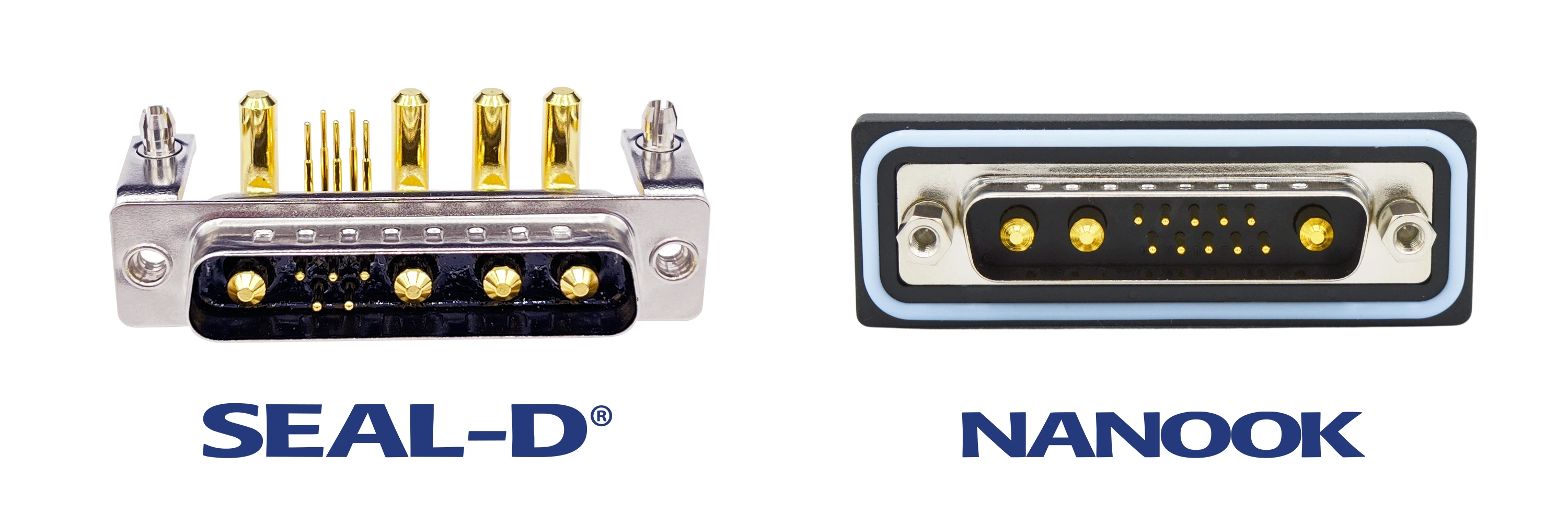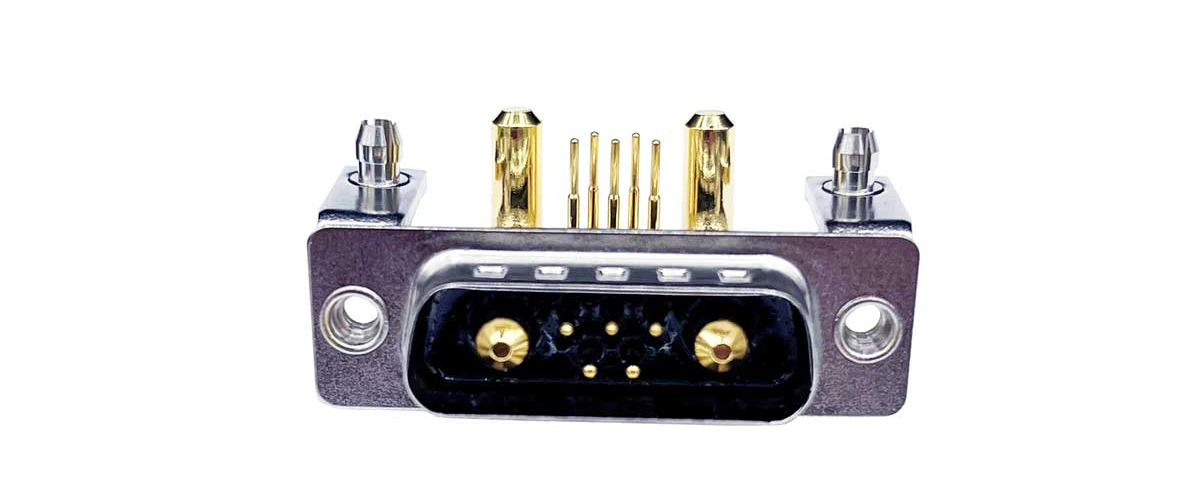Products
- Circular Connectors & Cable Assemblies
- D-Sub Connectors
- IP67 D-Sub Connectors
- D-Sub Backshells
- Micro-D Connectors & Cable Assemblies
- Power-D & Combo Mixed Connectors
- Push Pull Connectors
- D-Sub & Micro D Hardware
- Modular RJ45 Connectors
- USB Connectors
- D-Sub Adapters & Gender Changers
- SCSI .085"/.050"
- .050 Ribbon
- Headers & Receptacles
- Bayonet Connectors
When to Use Hybrid Connectors in Compact Devices

Space is at a premium in many industrial, medical, and military applications. From sensor systems to ruggedized PCs, compact devices offer limited real estate for data and power connections.
One question that may is whether power and signal should be combined into a single connector assembly. When is it appropriate to use a hybrid connector, and when should this be avoided?
This is an important question that will determine the look and feel of the end product, as well as its usability. It can also affect electrical performance in terms of EMI/EMC compliance, or it may limit the useful power available to the device. In this article, we’ll show some application examples detailing when power and signal should be consolidated, and some products that enable this approach to connector selection.
Mixing Power and Signal on the Same Connector
The ability to mix power and signal lines into a hybrid connector is not a new concept, particularly for devices that run at lower voltages and have limited board space for multiple connectors. Power-over-Ethernet (PoE) over an RJ45 connector is another example that offers higher voltage, typically 48 V, as well as high-bandwidth data connections. This allows a client device to receive power and data in a single standardized connector.
In other application areas, such as industrial systems or robotics, the high power demands involved may drive the need for separate power and signal connectors. Not all consolidated connector assemblies will satisfy system power and signal count requirements simultaneously, nor can they always meet all environmental requirements unless a custom connector is used. These are some of the points that need to be balanced when selecting consolidated power and signal connectors.
Characteristics of Combined Power/Signal Connectors
Before you select connectors that combine signal and power, consider these points as they will constrain available connector options:
- Signal count - When considering data interfaces, the first place to start evaluating connectors is the signal count and bandwidth.
- Current rating - The current rating tends to be lower in combined connectors with higher signal count. This is because larger conductors are needed for higher currents, which limits space for signal conductors.
- Mounting style - If you need a board-mount option with very high current rating, you might need a dedicated connector, or you may have to settle for a panel-mount option. Not all combined connectors will be available in both mounting styles.
- Insulation rating - When working at high voltage, the connector’s insulation rating will become important as dielectric breakdown must be prevented.
- Shielding - Some operating requirements (aerospace, industrial, etc.) carry strict ESD protection requirements. Shielded connectors may be able to satisfy much higher ESD pulse ratings so that EMC standards can be satisfied.
Due to the need to balance signal counts and power, high current requirements (> about 50 A) and/or high voltage requirements (> about 10 kV) might require a dedicated power connector. The same points apply when signal counts become large, even if power demands are not large.

Hybrid Connector Options
Although there is a broad range of connectors that mix signal and power, some standard connector form factors area available that consolidate signal lines and power into a single assembly:
- M12 circular connectors
- Modular D-sub connectors
- Coaxial mixed D-sub assemblies
- Circular push-pull connectors
These connectors are generally available as board-mount or panel-mount options. Some of these connector options will have rugged environmental design features, such as corrosion resistant materials (hard plastics or stainless steels), or keying and retention mechanisms. Rugged connector vendors can supply versions of these consolidated connectors that satisfy IP66 or IP67 ratings to ensure moisture and solid debris protection.
In the case where a vendor’s standard connector does not provide the required power rating and signal count, or when rugged operating requirements limit component selection, a custom connector will likely be the best option.
Customizing Power and Signal Connectors
If you opt for a custom connector assembly, you can certainly consolidate power and signal interfaces into a single pinout. Selecting custom connectors requires working directly with a manufacturer, but you will have more control over the form factor, as well as operating specifications.
Custom connectors can also be adapted from standard connector form factors (RJ45, D-sub, etc.) using tougher materials like stainless steel, giving a more rugged option with totally custom pinout. These custom connectors can be built to withstand moisture ingress, mechanical damage, corrosion, and extreme temperatures.
When you need to find power and signal connectors in standard and custom form factors, look to Norcomp for interconnect solutions that are designed for harsh environments. NorComp's product lines are Rugged Environment Certified (REC) and are ideal for use in robotics, military, industrial equipment, and other demanding applications.
Contact NorComp today to learn more about our standard or custom interconnect solutions.
Go Back





